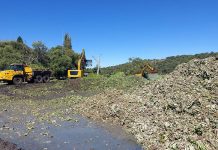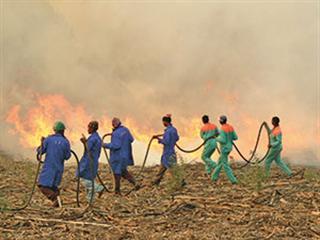While commercial banks are treading carefully in granting personal and small-business loans, it’s clear they’re growing their share of credit to farmers. Of a total of about R4 billion loaned to farmers in 2007, R2,5 billion came from commercial banks.
“The sector provides a basic human need, food,” said Standard Bank’s director of agricultural banking Bertie Smith. ““In uncertain and pressured times there are many considerations to try and weather the storm, but cutting the grocery bill is usually not at the top of one’s mind.
“Income elasticity of demand for food products is relatively low, so reducing disposable incomes won’t necessarily affect it. The inelastic nature of most basic food stuffs means a 1% decrease in disposable income will reflect less than a 1% reduction in demand for products.”
Absa’s agribusiness general manager Ernst Janovsky said Absa’s credit policy has remained unchanged for agribusiness and farmers. “It starts with the business case,” said Janovsky. “If there’s no repayability and the proposal doesn’t fly, it ends. We can’t finance someone to make a loss.
“In terms of collateral there must be security to cover the loan. Farmers must have enough capital available, so if the business fails they also loses something.” In the past, Absa took land as security, but now it’s also accepting security in the form of crops, stock in silo, or cattle.
Total farming credit at the end of June 2008 is estimated at R46,7 billion, against R39,4 billion the previous year, an increase of 18,5%, according to Department of Agricultural statistics.
Lending to farmers from institutions like the Land Bank have declined steeply since 2000, with the commercial banking sector quick to step in and pick up slack.
Statistics paint an interesting picture. From 1975 to 1999, commercial banks outpaced the Land Bank in agricultural lending by a narrow margin of R454 million to the Land Bank’s R429 million in 1975, R3,3 billion to the Land Bank’s R2,3 billion in 1985, and R6,3 billion to the Land Bank’s R4,6 billion in 1995.
Commercial banks galloped ahead of the Land Bank in 2001, after which the Land Bank consistently reduced lending. While commercial banks’ lending has grown from R11,1 billion in 2002 to R16,6 billion in 2004 and R25,2 billion in 2007, the Land Bank’s nose-dived from R7,9 billion in 2002 to R6,9 billion in 2004 and R4,7 billion in 2007.
Other credit sources include agricultural co-ops see-sawing in the R3 million to R4 million band, between 1986 to 2005, before picking up to the R5 million mark since 2006.
The Department of Agriculture’s lending dropped markedly from the R1 million level in the 1990s to R371 million in 2007. Lending by “other financial institutions” stood at R886 million, off their peak of R1 million in the 1980s.
Loans from “private persons” coughed up R2,9 million in 2007, a steady increase from R327 million in 1975, R792 million in 1985 and R1,6 million in 1995. – Robyn Joubert
Agri lending remains healthy despite slump
While commercial banks are treading carefully in granting personal and small-business loans, it’s clear they’re growing their share of credit to farmers. Of a total of about R4 billion loaned to farmers in 2007, R2,5 billion came from commercial banks.
| Read more |
|









